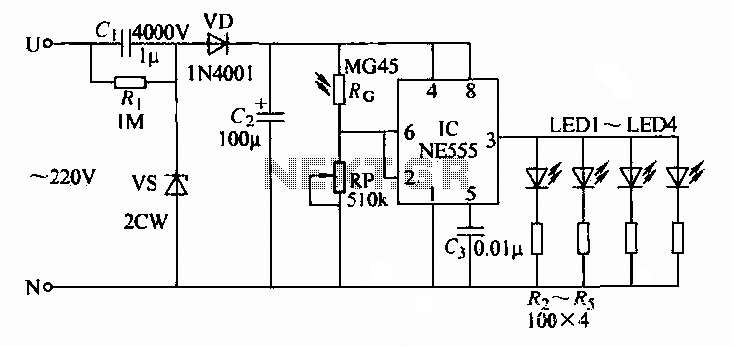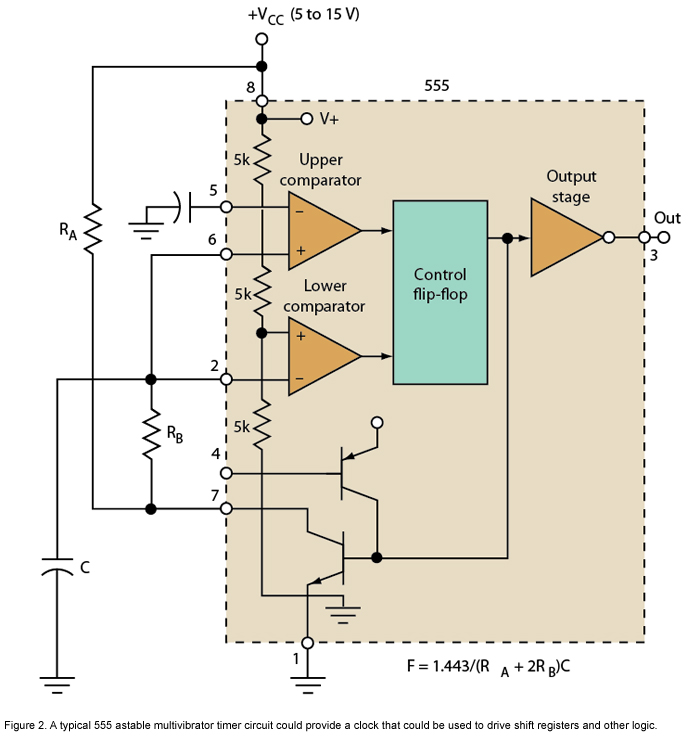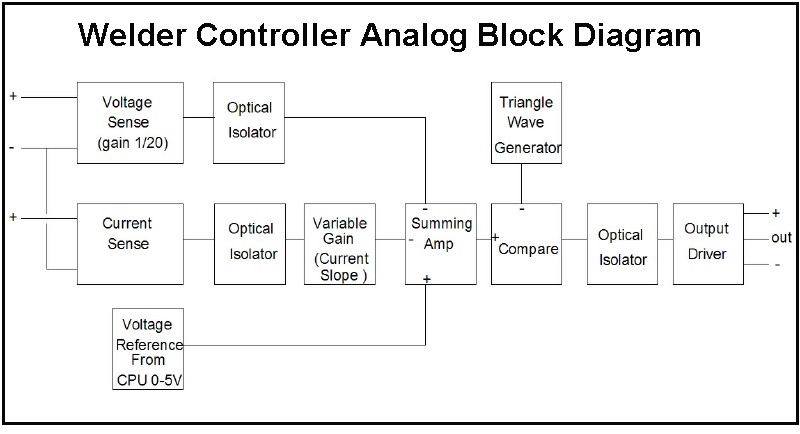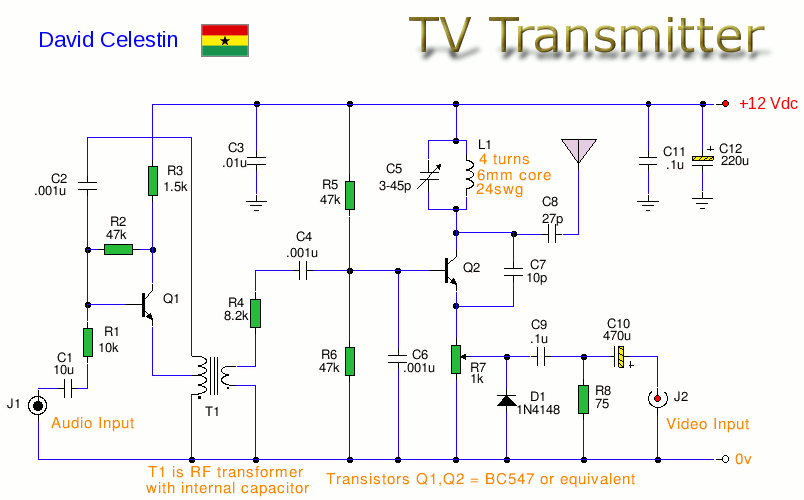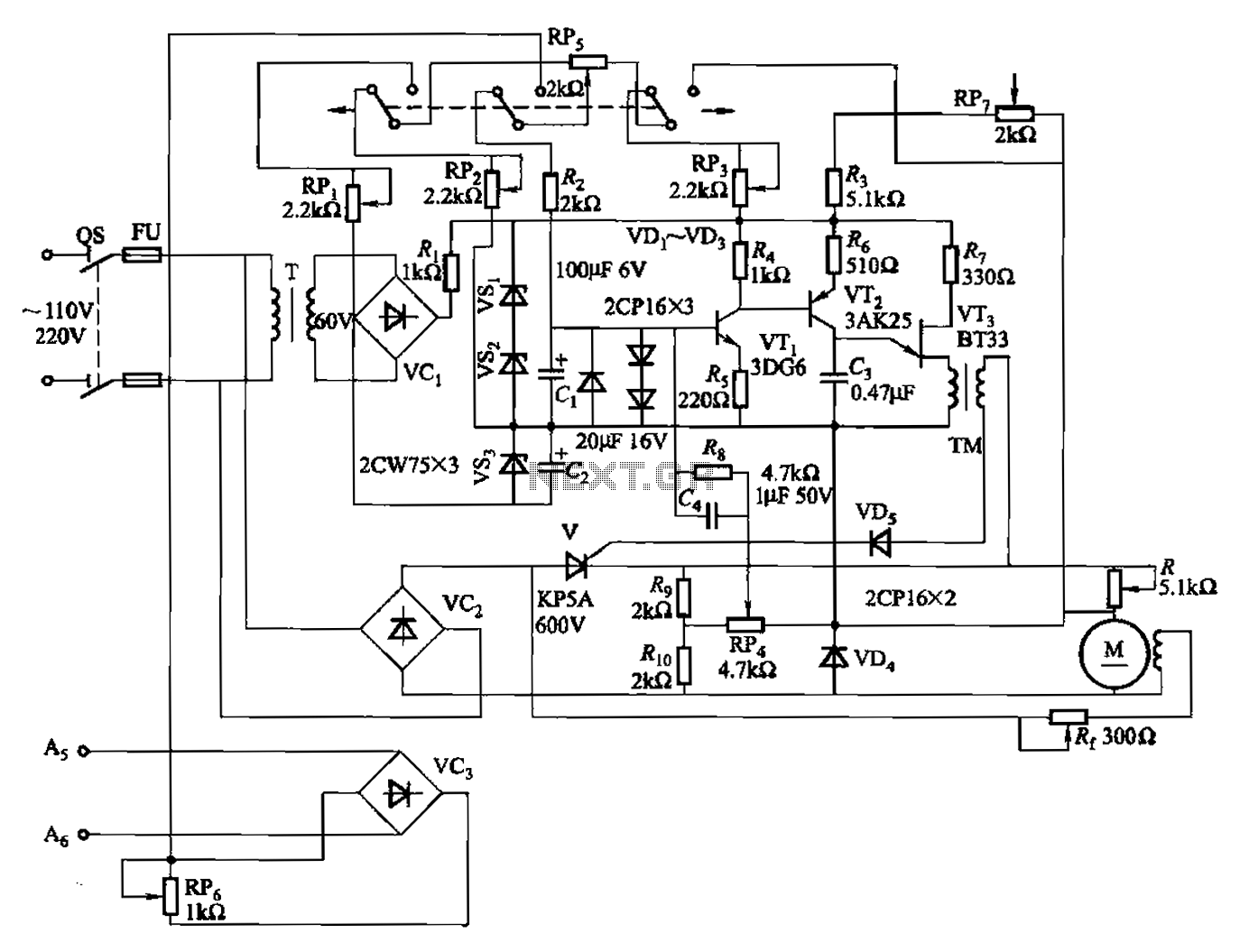
Twelve road lighting control circuits
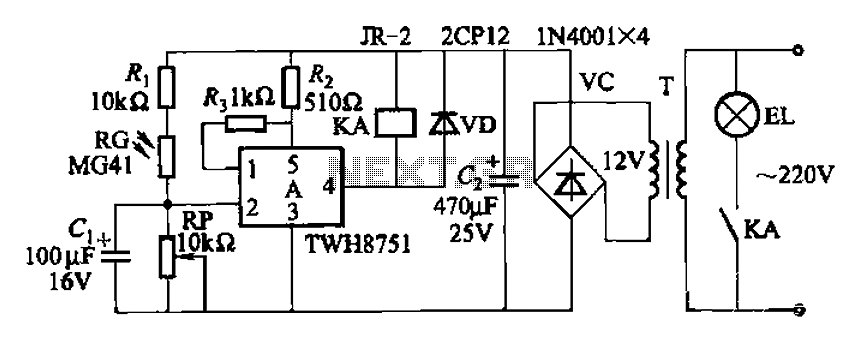
The adjustment potentiometer RP can modify the sensitivity of the device. Capacitors C1 function as an anti-light interference mechanism for instantaneous action.
The adjustment potentiometer (RP) is a variable resistor that allows for fine-tuning of the device's sensitivity. By altering the resistance, the potentiometer can increase or decrease the responsiveness of the circuit to input signals, enabling the user to optimize performance based on specific requirements or environmental conditions. This feature is particularly useful in applications where precise control is necessary, such as in sensors or audio equipment.
Capacitor C1 serves a critical role in mitigating light-induced interference. It is designed to filter out high-frequency noise that can result from rapid changes in ambient light conditions. This anti-light interference capability is essential for maintaining the integrity of the device's operation, ensuring that it remains unaffected by transient light sources. The instantaneous action of the capacitor allows it to react quickly to fluctuations, providing a stable output signal that is less prone to distortion caused by external light interference.
In summary, the combination of the adjustment potentiometer and the anti-light interference capacitor creates a robust circuit that enhances the overall functionality of the device, allowing for adaptability in varying conditions while ensuring reliable performance.Adjustment potentiometer RP, can change the sensitivity of the device. Capacitors Cl as an anti-light interference of instantaneous action.
The adjustment potentiometer (RP) is a variable resistor that allows for fine-tuning of the device's sensitivity. By altering the resistance, the potentiometer can increase or decrease the responsiveness of the circuit to input signals, enabling the user to optimize performance based on specific requirements or environmental conditions. This feature is particularly useful in applications where precise control is necessary, such as in sensors or audio equipment.
Capacitor C1 serves a critical role in mitigating light-induced interference. It is designed to filter out high-frequency noise that can result from rapid changes in ambient light conditions. This anti-light interference capability is essential for maintaining the integrity of the device's operation, ensuring that it remains unaffected by transient light sources. The instantaneous action of the capacitor allows it to react quickly to fluctuations, providing a stable output signal that is less prone to distortion caused by external light interference.
In summary, the combination of the adjustment potentiometer and the anti-light interference capacitor creates a robust circuit that enhances the overall functionality of the device, allowing for adaptability in varying conditions while ensuring reliable performance.Adjustment potentiometer RP, can change the sensitivity of the device. Capacitors Cl as an anti-light interference of instantaneous action.
Warning: include(partials/cookie-banner.php): Failed to open stream: Permission denied in /var/www/html/nextgr/view-circuit.php on line 713
Warning: include(): Failed opening 'partials/cookie-banner.php' for inclusion (include_path='.:/usr/share/php') in /var/www/html/nextgr/view-circuit.php on line 713
